- Home
- Walter Scott
The Monastery Page 2
The Monastery Read online
Page 2
Chapter the First.
O ay! the Monks, the Monks they did the mischief! Theirs all the grossness, all the superstition Of a most gross and superstitious age-- May He be praised that sent the healthful tempest And scatter'd all these pestilential vapours! But that we owed them _all_ to yonder Harlot Throned on the seven hills with her cup of gold, I will as soon believe, with kind Sir Roger, That old Moll White took wing with cat and broomstick, And raised the last night's thunder. OLD PLAY.
The village described in the Benedictine's manuscript by the nameof Kennaquhair, bears the same Celtic termination which occurs inTraquhair, Caquhair, and other compounds. The learned Chalmers derivesthis word Quhair, from the winding course of a stream; a definitionwhich coincides, in a remarkable degree, with the serpentine turns ofthe river Tweed near the village of which we speak. It has been longfamous for the splendid Monastery of Saint Mary, founded by David theFirst of Scotland, in whose reign were formed, in the same county, theno less splendid establishments of Melrose, Jedburgh, and Kelso. Thedonations of land with which the King endowed these wealthy fraternitiesprocured him from the Monkish historians the epithet of Saint, and fromone of his impoverished descendants the splenetic censure, "that he hadbeen a sore saint for the Crown."
It seems probable, notwithstanding, that David, who was a wise as wellas a pious monarch, was not moved solely by religious motives to thosegreat acts of munificence to the church, but annexed political views tohis pious generosity. His possessions in Northumberland and Cumberlandbecame precarious after the loss of the Battle of the Standard; andsince the comparatively fertile valley of Teviot-dale was likely tobecome the frontier of his kingdom, it is probable he wished to secureat least a part of these valuable possessions by placing them in thehands of the monks, whose property was for a long time respected, evenamidst the rage of a frontier war. In this manner alone had the Kingsome chance of ensuring protection and security to the cultivators ofthe soil; and, in fact, for several ages the possessions of theseAbbeys were each a sort of Goshen, enjoying the calm light of peaceand immunity, while the rest of the country, occupied by wild clans andmarauding barons, was one dark scene of confusion, blood, and unremittedoutrage.
But these immunities did not continue down to the union of the crowns.Long before that period the wars betwixt England and Scotland had losttheir original character of international hostilities, and had becomeon the part of the English, a struggle for subjugation, on that ofthe Scots a desperate and infuriated defence of their liberties. Thisintroduced on both sides a degree of fury and animosity unknown to theearlier period of their history; and as religious scruples soon gave wayto national hatred spurred by a love of plunder, the patrimony of theChurch was no longer sacred from incursions on either side. Still,however, the tenants and vassals of the great Abbeys had many advantagesover those of the lay barons, who were harassed by constant militaryduty, until they became desperate, and lost all relish for the arts ofpeace. The vassals of the church, on the other hand, were only liableto be called to arms on general occasions, and at other times werepermitted in comparative quiet to possess their farms and feus.[Footnote: Small possessions conferred upon vassals and their heirs,held for a small quit-rent, or a moderate proportion of the produce.This was a favourite manner, by which the churchmen peopled thepatrimony of their convents; and many descendants of such _feuars_, asthey are culled, are still to be found in possession of their familyinheritances in the neighbourhood of the great Monasteries of Scotland.]They of course exhibited superior skill in every thing that relatedto the cultivation of the soil, and were therefore both wealthier andbetter informed than the military retainers of the restless chiefs andnobles in their neighbourhood.
The residence of these church vassals was usually in a small village orhamlet, where, for the sake of mutual aid and protection, some thirtyor forty families dwelt together. This was called the Town, and the landbelonging to the various families by whom the Town was inhabited, wascalled the Township. They usually possessed the land in common, thoughin various proportions, according to their several grants. The part ofthe Township properly arable, and kept as such continually under theplough, was called _in-field_. Here the use of quantities of manuresupplied in some degree the exhaustion of the soil, and the feuarsraised tolerable oats and bear, [Footnote: Or bigg, a kind of coarsebarley.] usually sowed on alternate ridges, on which the labour of thewhole community was bestowed without distinction, the produce beingdivided after harvest, agreeably to their respective interests.
There was, besides, _out-field_ land, from which it was thought possibleto extract a crop now and then, after which it was abandoned to the"skiey influences," until the exhausted powers of vegetation wererestored. These out-field spots were selected by any feuar at his ownchoice, amongst the sheep-walks and hills which were always annexed tothe Township, to serve as pasturage to the community. The trouble ofcultivating these patches of out-field, and the precarious chance thatthe crop would pay the labour, were considered as giving a right to anyfeuar, who chose to undertake the adventure, to the produce which mightresult from it.
There remained the pasturage of extensive moors, where the valleys oftenafforded good grass, and upon which the whole cattle belonging to thecommunity fed indiscriminately during the summer, under the charge ofthe Town-herd, who regularly drove them out to pasture in the morning,and brought them back at night, without which precaution they wouldhave fallen a speedy prey to some of the Snatchers in the neighbourhood.These are things to make modern agriculturists hold up their hands andstare; but the same mode of cultivation is not yet entirely in desuetudein some distant parts of North Britain, and may be witnessed in fullforce and exercise in the Zetland Archipelago.
The habitations of the church-feuars were not less primitive than theiragriculture. In each village or town were several small towers, havingbattlements projecting over the side walls, and usually an advancedangle or two with shot-holes for flanking the door-way, which was alwaysdefended by a strong door of oak, studded with nails, and often by anexterior grated door of iron. These small peel-houses were ordinarilyinhabited by the principal feuars and their families; but, upon thealarm of approaching danger, the whole inhabitants thronged from theirown miserable cottages, which were situated around, to garrison thesepoints of defence. It was then no easy matter for a hostile party topenetrate into the village, for the men were habituated to the use ofbows and fire-arms, and the towers being generally so placed, that thedischarge from one crossed that of another, it was impossible to assaultany of them individually.
The interior of these houses was usually sufficiently wretched, for itwould have been folly to have furnished them in a manner which couldexcite the avarice of their lawless neighbours. Yet the familiesthemselves exhibited in their appearance a degree of comfort,information, and independence, which could hardly have been expected.Their in-field supplied them with bread and home-brewed ale, their herdsand flocks with beef and mutton (the extravagance of killing lambs orcalves was never thought of). Each family killed a mart, or fat bullock,in November, which was salted up for winter use, to which the good wifecould, upon great occasions, add a dish of pigeons or a fat capon,--theill-cultivated garden afforded "lang-cale,"--and the river gave salmonto serve as a relish during the season of Lent.
Of fuel they had plenty, for the bogs afforded turf; and the remainsof the abused woods continued to give them logs for burning, as well astimber for the usual domestic purposes. In addition to these comforts,the good-man would now and then sally forth to the greenwood, and markdown a buck of season with his gun or his cross-bow; and the FatherConfessor seldom refused him absolution for the trespass, if dulyinvited to take his share of the smoking haunch. Some, still bolder,made, either with their own domestics, or by associating themselves withthe moss-troopers, in the language of shepherds, "a start and overloup;"and the golden ornaments and silken head-gear--worn by the females ofone or two families of note, were invi
diously traced by their neighboursto such successful excursions. This, however, was a more inexplicablecrime in the eyes of the Abbot and Community of Saint Mary's, thanthe borrowing one of the "gude king's deer;" and they failed not todiscountenance and punish, by every means in their power, offences whichwere sure to lead to severe retaliation upon the property of the church,and which tended to alter the character of their peaceful vassalage.
As for the information possessed by those dependents of the Abbacies,they might have been truly said to be better fed than taught, eventhough their fare had been worse than it was. Still, however, theyenjoyed opportunities of knowledge from which others were excluded. Themonks were in general well acquainted with their vassals and tenants,and familiar in the families of the better class among them, where theywere sure to be received with the respect due to their twofold characterof spiritual father and secular landlord. Thus it often happened, whena boy displayed talents and inclination for study, one of the brethren,with a view to his being bred to the church, or out of good-nature,in order to pass away his own idle time, if he had no better motive,initiated him into the mysteries of reading and writing, and imparted tohim such other knowledge as he himself possessed. And the heads of theseallied families, having more time for reflection, and more skill, aswell as stronger motives for improving their small properties, boreamongst their neighbours the character of shrewd, intelligent men, whoclaimed respect on account of their comparative wealth, even while theywere despised for a less warlike and enterprising turn than the otherBorderers. They lived as much as they well could amongst themselves,avoiding the company of others, and dreading nothing more than to beinvolved in the deadly feuds and ceaseless contentions of the secularlandholders.
Such is a general picture of these communities. During the fatal wars inthe commencement of Queen Mary's reign, they had suffered dreadfully bythe hostile invasions. For the English, now a Protestant people, wereso far from sparing the church-lands, that they forayed them with moreunrelenting severity than even the possessions of the laity. Butthe peace of 1550 had restored some degree of tranquillity to thosedistracted and harassed regions, and matters began again graduallyto settle upon the former footing. The monks repaired their ravagedshrines--the feuar again roofed his small fortalice which the enemy hadruined--the poor labourer rebuilt his cottage--an easy task, where a fewsods, stones, and some pieces of wood from the next copse, furnishedall the materials necessary. The cattle, lastly, were driven out of thewastes and thickets in which the remnant of them had been secreted; andthe mighty bull moved at the head of his seraglio and their followers,to take possession of their wonted pastures. There ensued peace andquiet, the state of the age and nation considered, to the Monastery ofSaint Mary, and its dependencies, for several tranquil years.

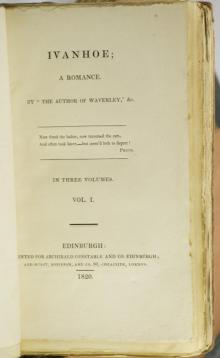 Ivanhoe: A Romance
Ivanhoe: A Romance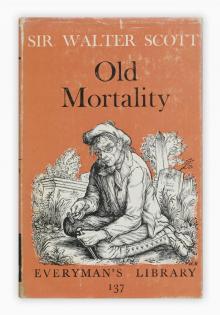 Old Mortality, Complete
Old Mortality, Complete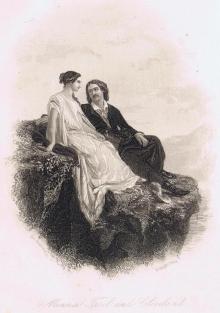 The Pirate
The Pirate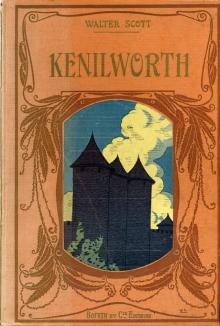 Kenilworth
Kenilworth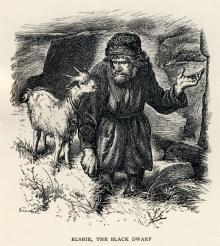 The Black Dwarf
The Black Dwarf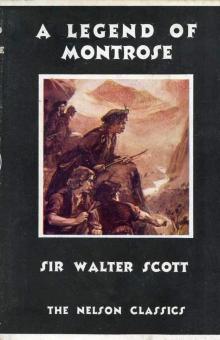 A Legend of Montrose
A Legend of Montrose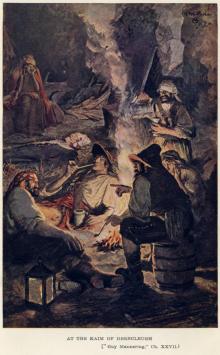 The Monastery
The Monastery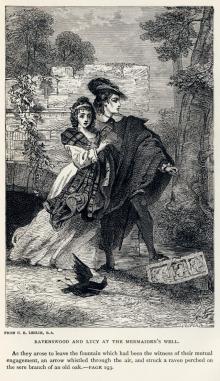 The Bride of Lammermoor
The Bride of Lammermoor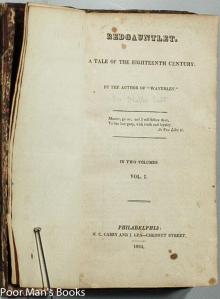 Redgauntlet: A Tale Of The Eighteenth Century
Redgauntlet: A Tale Of The Eighteenth Century St. Ronan's Well
St. Ronan's Well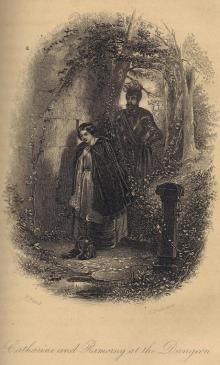 The Fair Maid of Perth; Or, St. Valentine's Day
The Fair Maid of Perth; Or, St. Valentine's Day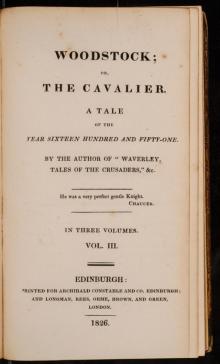 Woodstock; or, the Cavalier
Woodstock; or, the Cavalier_preview.jpg) Anne of Geierstein; Or, The Maiden of the Mist. Volume 1 (of 2)
Anne of Geierstein; Or, The Maiden of the Mist. Volume 1 (of 2)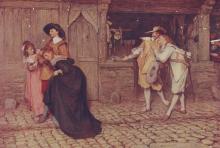 Peveril of the Peak
Peveril of the Peak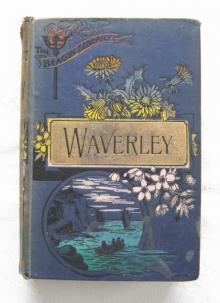 Waverley; Or, 'Tis Sixty Years Since
Waverley; Or, 'Tis Sixty Years Since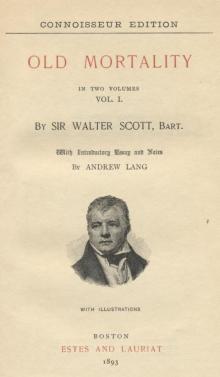 Old Mortality, Volume 1.
Old Mortality, Volume 1. Waverley Novels — Volume 12
Waverley Novels — Volume 12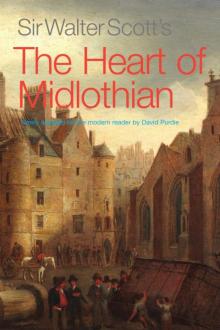 The Heart of Mid-Lothian, Complete
The Heart of Mid-Lothian, Complete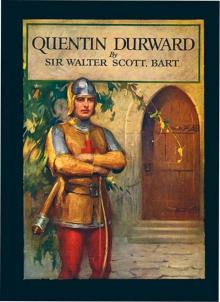 Quentin Durward
Quentin Durward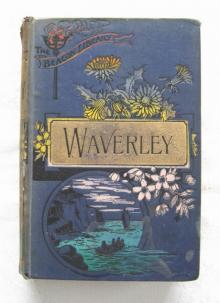 Waverley; Or 'Tis Sixty Years Since — Complete
Waverley; Or 'Tis Sixty Years Since — Complete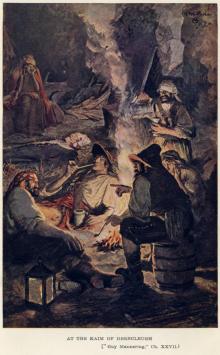 Guy Mannering; or, The Astrologer — Complete
Guy Mannering; or, The Astrologer — Complete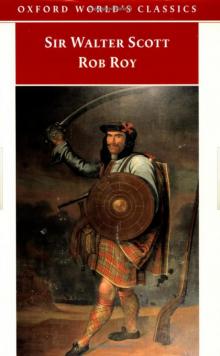 Rob Roy — Complete
Rob Roy — Complete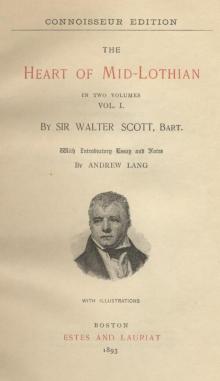 The Heart of Mid-Lothian, Volume 2
The Heart of Mid-Lothian, Volume 2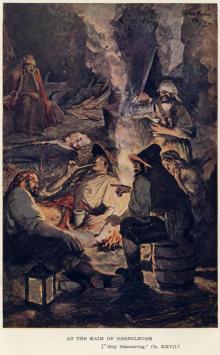 Guy Mannering, Or, the Astrologer — Complete
Guy Mannering, Or, the Astrologer — Complete_preview.jpg) Anne of Geierstein; Or, The Maiden of the Mist. Volume 2 (of 2)
Anne of Geierstein; Or, The Maiden of the Mist. Volume 2 (of 2)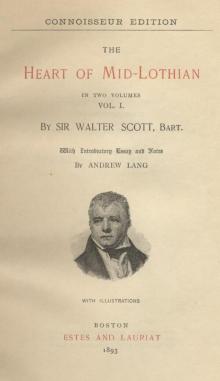 The Heart of Mid-Lothian, Volume 1
The Heart of Mid-Lothian, Volume 1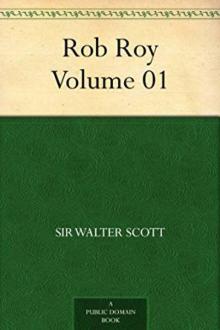 Rob Roy — Volume 01
Rob Roy — Volume 01 Waverley; Or, 'Tis Sixty Years Since — Volume 2
Waverley; Or, 'Tis Sixty Years Since — Volume 2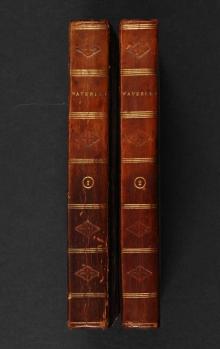 Waverley; Or, 'Tis Sixty Years Since — Volume 1
Waverley; Or, 'Tis Sixty Years Since — Volume 1 Guy Mannering, Or, the Astrologer — Volume 01
Guy Mannering, Or, the Astrologer — Volume 01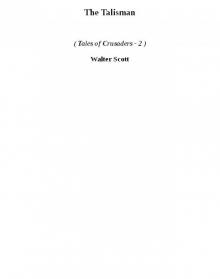 The Talisman toc-2
The Talisman toc-2 Rob Roy
Rob Roy Old Mortality, Volume 2.
Old Mortality, Volume 2. The Betrothed
The Betrothed Waverley
Waverley The Surgeon's Daughter
The Surgeon's Daughter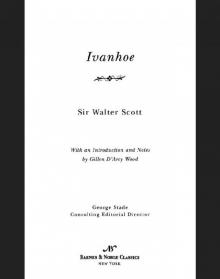 Ivanhoe (Barnes & Noble Classics Series)
Ivanhoe (Barnes & Noble Classics Series)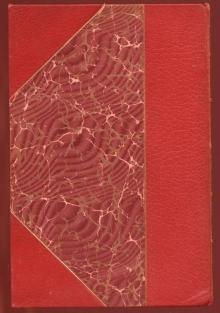 The Antiquary
The Antiquary Letters on Demonology and Witchcraft
Letters on Demonology and Witchcraft Trial of Duncan Terig
Trial of Duncan Terig Redgauntlet
Redgauntlet My Aunt Margaret's Mirror
My Aunt Margaret's Mirror Guy Mannering or The Astrologer
Guy Mannering or The Astrologer Marmion
Marmion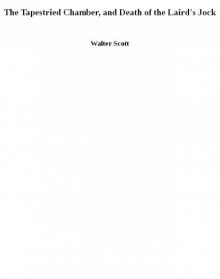 The Tapestried Chamber, and Death of the Laird's Jock
The Tapestried Chamber, and Death of the Laird's Jock Chronicles of the Canongate
Chronicles of the Canongate The Fair Maid of Perth or St. Valentine's Day
The Fair Maid of Perth or St. Valentine's Day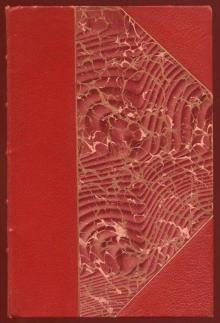 The Heart of Mid-Lothian
The Heart of Mid-Lothian Lady of the Lake
Lady of the Lake